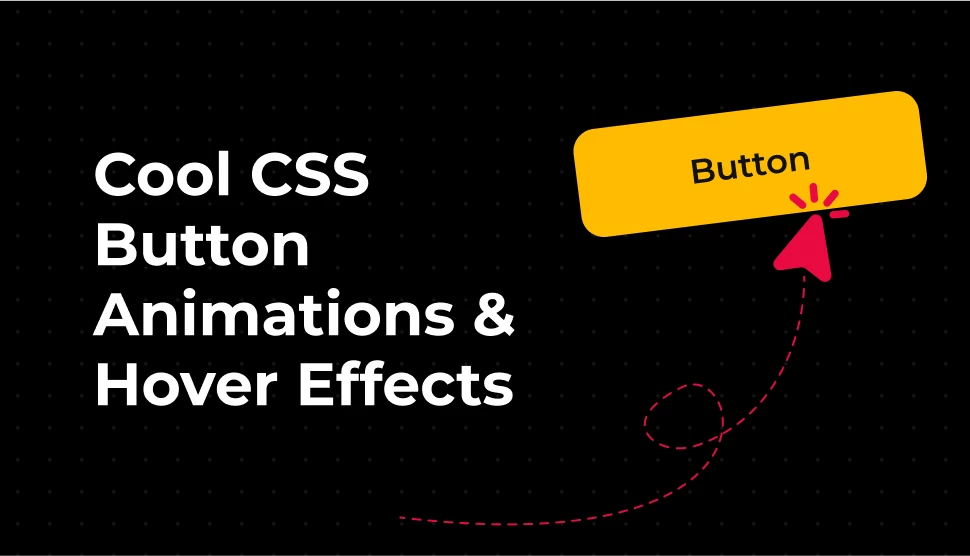How to Design an Effective Website for a Target Audience
6 mins | Oct 23, 2023

We live in a world where almost everything happens online on websites. The internet is our place, from buying shoes to learning about different professions. Have you ever come upon a website that just felt right? The website knew exactly what you were looking for and presented it most attractively. That's the power of designing for a target audience.
Web design isn't just about making websites look pretty. It's about making your website work for the people who visit it. No matter who you are, a blogger or a business owner – the success of your website depends on one thing. It depends on how well it connects with your intended audience.
Here, we'll delve deep into the art of designing for your target audience. We'll start by understanding your audience and what they're all about. Then, we'll explore how you can create a website that resonates with them.
This guide covers website design strategies. It includes competitor analysis, mobile optimization, and crafting content that resonates with your audience. Also, introduce you to designing tools and new Ideas.
2. Understanding Your Target Audience
Understanding your target audience is the basis of creating the design for a target audience. By designing a website for the target audience according to their specific needs and desires, you can create a website that truly speaks to them. We'll go into great detail about understanding your audience in this section.
The first thing is to define your target audience.
Let's begin with the basics. What is the target audience? Your target audience is the group of people most likely to be interested in what your website offers. They're the ones you want to attract and engage with.
Defining your target audience is like finding the perfect fishing spot. It ensures that your efforts are focused, and your resources are well spent. You're not casting a wide net hoping to catch something; you're angling for a specific catch.
Creating buyer personas is like sketching detailed portraits of your ideal audience members. You'll dive into their demographics, interests, behaviours, and preferences. These personas serve as your guides throughout the design process.
What is the Role of Market Research in Understanding Your Audience?
Market research is your flashlight in the dark, helping you uncover the insights needed to understand your audience. It provides data-driven information that's invaluable in crafting your website.
There are various tools and methods at your disposal for collecting audience data. You can find your target audience from surveys and analytics tools to social media insights and many more tools.
You can identify your target audience's needs with these tools and data. You can create your website design from these details for the target audience. Here, you also love to read the best steps for lead generation by your plans for your business.
3. The Connection Between Design and Target Audience
When it comes to web design, it's about more than aesthetics or technical functionality. Innovation is pivotal in ensuring your website communicates with your target audience. Explore the intricate relationship between target design and your target audience. Effective web design goes far beyond creating visually appealing websites. It's about optimizing the user experience (UX) and interface (UI) to enhance user satisfaction. A well-designed website provides seamless navigation, faster loading times, and a pleasing layout.
Designers use UI and UX principles to create unique websites that cater to the target audience. It preferences and expectations, focusing on visual engagement and interactivity. UX and UI are crucial to developing robust and enjoyable website browsing.
Web Design Elements for Audience Attraction-
Colour significantly impacts human emotions and user behaviour. Designers choose colours that resonate with specific audience preferences. Also, it elicits specific feelings and conveys the right message to the intended audience.
Typography in web design uses different fonts to create a visual language that speaks to the audience's feelings and thoughts. This helps convey the brand's message in a way that resonates with what people like.
Also, text, pictures and graphics play a significant role in web design. They help connect with your target audience by using relatable images and adding relevant graphics. It is time to explain how design is essential to the content; how content is presented matters as much as the design. Designers consider the language, tone, and style that will resonate with the target audience. A formal and professional manner may suit a legal services website, while a casual and friendly tone can work for a lifestyle blog. Tailoring the content style ensures that your audience feels comfortable and connected.
Content quality could be better for a website's success, as it needs more design and relevance to the audience's needs.
The relationship between design and your target audience is essential. A well-designed website should cater to your audience's expectations, preferences, and emotions. When designing content and colour, find the most appropriate audience for this appeal.
Read more - 5 Effective Tips for Creating Content for Buyer's Journey.
4. Why it's Important to Study Your Competitors?
It's a smart move to keep an eye on what your competition is up to. It's not about copying them but about how to target visitors from the target website. When you look at your competitors, you can gain valuable insights to improve your website. This helps you make informed decisions about your site's appearance and function. For example, if you're designing for a specific audience, checking out your competitors can spark ideas and show you what's good.
When you visit your competitors' websites, it's not just about spying on them. It's about learning. You want to know what they're doing right and what they're doing wrong. This way, you can figure out what works for your target audience. You can understand what the audience likes by looking at what your competitors are good at and where they can improve.
To better understand competitors and what makes for great design, we'll look at some real websites that have nailed it. These websites have successfully created arrangements for a target audience that suits them perfectly. By examining their achievements, you'll see how intelligent design choices can bring fantastic results.
5. Tailoring Design for Specific Audiences
When designing for the target audience, age plays a crucial role. The preferences and needs of a teenager differ from those of a senior citizen. For instance, young adults may prefer vibrant colours, while older people appreciate simplicity. Your design can help you connect with the right audience through these differences.
Cultural nuances, regional preferences, and traditions can significantly influence design choices. For example, colour symbolism varies widely across cultures. Red might symbolise luck in one culture, while it signifies danger in another. Taking these cultural subtleties into account can make or break the success of your design.
Also, different industries have their own sets of conventions and expectations. A healthcare website needs to convey trust and professionalism. The fashion site must be stylish and visually engaging.
Understanding the nuances of each industry can help you create designs that resonate with the target market images. In healthcare, you might focus on soothing colours, while bold and modern designs are often more suitable in the tech industry.
You can make your designs better in two ways. First, adjust your strategy to match the likes of different age groups, regions, cultures, and industries. Second, this will help you create designs for the target audience you will connect with.
Read more - What is Performance Marketing
6. Optimizing Your Design for All Screens
No matter what device your audience prefers, having a design that functions well on mobile is a strong point for creating a target audience. Navigation plays a huge role in how users experience your website. How people interact with your content can differ depending on their screen size and device. Whether using a mouse, touchscreen, or keyboard, they should easily find what they want. As a designer, it's crucial to consider these factors when creating a navigation system for your target audience.
Adapting your navigation to fit different screen sizes ensures users have a similar experience. For instance, a compact menu or a hidden sidebar might work better on smaller screens. On more giant screens, you can have a more expansive navigation menu. You were considering how users interact with your content on various devices. It is vital to offer a smooth and accessible experience and help you reach your target audience by making mobile-friendly designs.
7. The Role of Visual Hierarchy in Creating a Target Audience
Great design and colours are not only part of creating a target audience but also one more part of target design: hierarchy. It's about helping your audience understand what's most important. Visual hierarchy is a powerful tool that allows your audience to design.
Visual hierarchy is about arranging elements in your design to show their importance. Think of it as a roadmap for your audience's eyes. It guides them through your content, highlighting what's most important. When used effectively, it helps your audience quickly understand your message.
For example, you usually notice a big headline or logo when you visit a website. That's a visual hierarchy in action, guiding your eyes to where the critical information and buttons are. This principle is crucial because it makes your design user-friendly and engaging.
The psychology behind the visual hierarchy is fascinating. It's rooted in how they design for the target audience as their brains work. Our eyes are naturally drawn to things that stand out. Colours, sizes, and where elements are placed all affect what we notice first. For example, a bright red web button stands out and calls for action.
Understanding this psychology allows designers to create intuitive designs for their audience. By using colours, sizes, and positions wisely, designers can help users navigate and engage with content more easily.
Organizing Content Based on Audience Priorities
When designing for a specific audience, you must know what's most important to them. This means understanding their needs and tailoring your design to meet those needs. For instance, if your audience cares most about product details, make sure those details are a must on your e-commerce website.
The most important stories were put on the top half of the front page because they'd be seen first when the paper was folded. In web design, it means putting the fundamental stuff where users can see it without scrolling.
This means crucial information should be immediately visible to your target audience. Put these things front and centre, whether it's a "Buy Now" button, contact info, or vital content. This makes it easy for your audience to find what they need without extra effort.
By arranging elements, you ensure your audience knows where to look and what to do, making their experience smooth and enjoyable.
Read more - Enhance Website Performance: Four Pillars for Success.
8. Practical Steps on Create Target Design
Now that we've explored the principles and psychology behind designing for your target audience. Now, it's time to get into the practical side. Designing isn't just about ideas; it's also about the process and fine-tuning your work on how to reach a target audience.
When designing for your target audience, it requires a structured approach. The design process involves several stages, from understanding the problem to finding out the product for the target audience. These stages may include research, brainstorming, sketching, prototyping, and testing. Each step is essential for creating a design that truly resonates with your authentic audience.
It's crucial to keep your target audience in mind throughout the design process. User-focused design means referring to your buyer personas and understanding their needs. Your design decisions should align with what will benefit your audience most.
Conduct user testing and gather feedback at various stages of your design process. This helps make informed design choices and ensures the end product is tailored to your audience.
9. The Significance of Testing Design with Your Target Audience
Testing your design with your target audience is last in the designing process. It's the moment of truth when you determine whether your design effectively meets your users' needs and expectations. Depending on your project's scope and goals, this step can involve usability testing, A/B testing, or focus groups.
Testing is where theory meets reality. It helps you identify usability issues and understand how users interact with your design. Also, determine whether it truly resonates with your audience. Please take this step, as it can save you from costly mistakes and design revisions.
Various methods exist to gather this feedback, including surveys, interviews, and analytics tools. User feedback provides valuable insights into what's working and what needs improvement in web design.
When you receive feedback, make sure to act on it. Adjust your design based on the insights you gain from your target audience. This iterative process of testing and refining is what sets successful strategies apart. Your audience's input is invaluable in ensuring your design aligns with their expectations. Here is the guide for teasing methods.
Testing your design with real users and collecting feedback is vital to creating designs that truly resonate and meet their needs. Design isn't a one-time endeavour; it's an ongoing improvement process.
10. Conclusion
This blog looks at how to design for the target audience. We start by understanding who your audience is and what they like. Then, we explore creating a website they'll find interesting and valuable.
The guide covers different aspects of web design, from looking at what your competitors are doing to understanding the role of colours and fonts and organizing for creating a target audience.
In short, designing for your target audience means understanding their needs and wants. Using the knowledge to create a website the target audience loves the most.
Author







